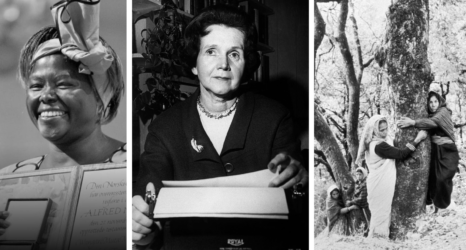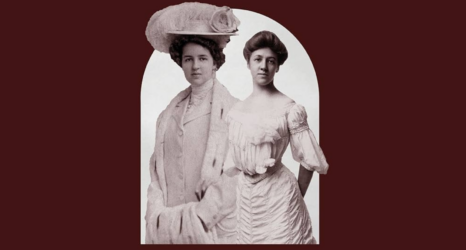“I’ve always loved the horror genre, because it’s a genre where you get to see a girl fighting back with everything she’s got.”
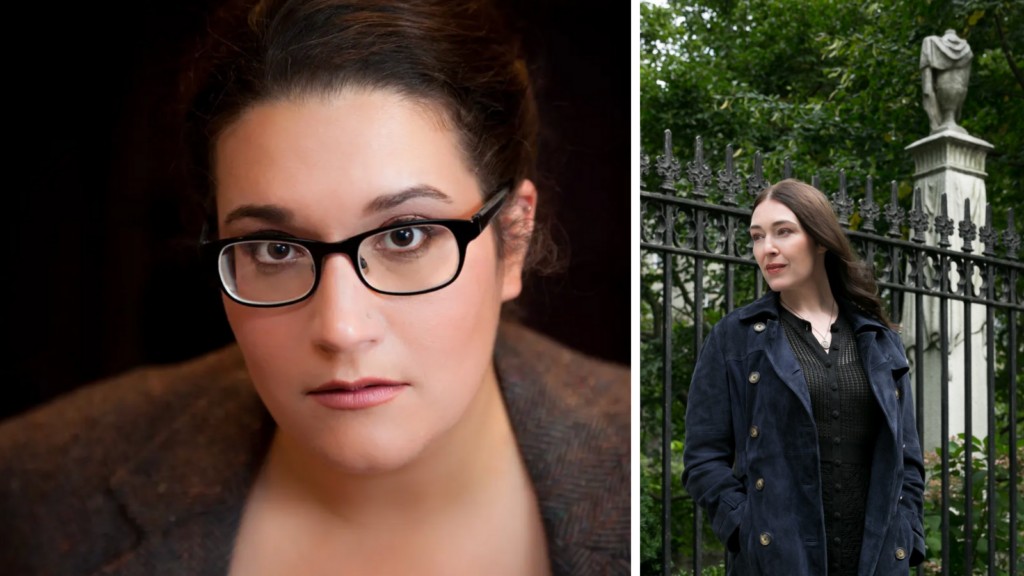
When Joe Hill first emailed me to ask, “Have you ever thought about writing a comic book?” he said that DC Comics was also recruiting Carmen Maria Machado to write one—and I was thrilled. I’ve been a fan of Carmen’s work ever since reading her stunning short story collection, Her Body and Other Parties.
Cut to 2020: Machado and I both have graphic novels appearing in hardcover via Hill House Comics, Hill’s hand-curated horror imprint at DC Comics. Machado’s book, THE LOW, LOW WOODS, is already in print, and my book, DAPHNE BYRNE, releases on Nov. 3.
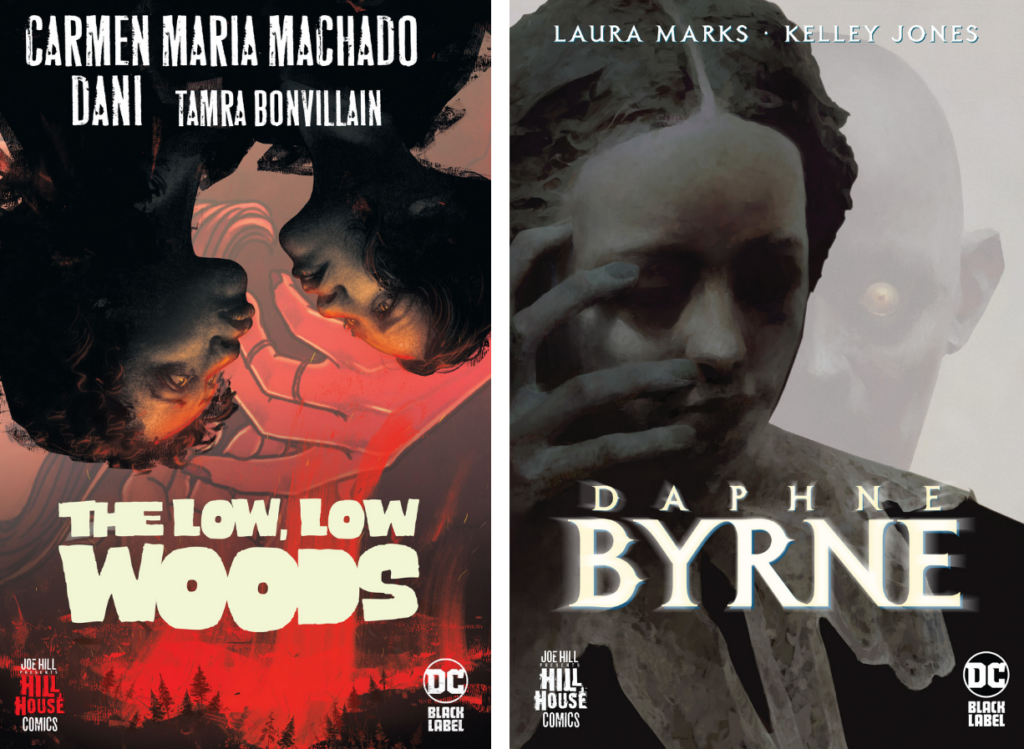
I’m primarily a TV writer and playwright, and I first met Hill when I was hired to help develop his horror comic series (Locke and Key) for television. I’d always loved comics and graphic novels, but it wasn’t until reading Locke and Key that I thought, “Wow. Comics are a fantastic vehicle for smart, character-driven horror. I’d really like to write one someday.”
Recently, I had the opportunity to talk to Machado about the challenges inherent in working in comics, our own horror genre influences and inspirations, and the themes readers will find in our feminist horror comic books—just in time for Halloween.
Laura Marks: Carmen, how did you originally connect with DC, and what ran through your head when they asked you about writing a comic? Was it a medium you’d always wanted to explore?
Carmen Maria Machado: The folks at DC—then, the folks at Vertigo, RIP—reached out as fans! They said they loved my work, and to let them know if I was ever interested in writing a horror comic. I was, of course. I love graphic work and comics, and I’d always been a huge fan of Vertigo. But naturally I had no idea what I was doing; I’m a prose writer by trade and I’d never written anything with a graphic component. But my editors at DC were amazing—they helped me every step of the way. And once Joe was attached, and we decided to make TLLW a part of his imprint, I got his brilliance and expertise, too.
The project itself was a novel idea I’d abandoned ages ago, based on a dream I’d had. Once I looked at it with fresh eyes, and thinking about the comic medium, I found myself excited to tackle it afresh.
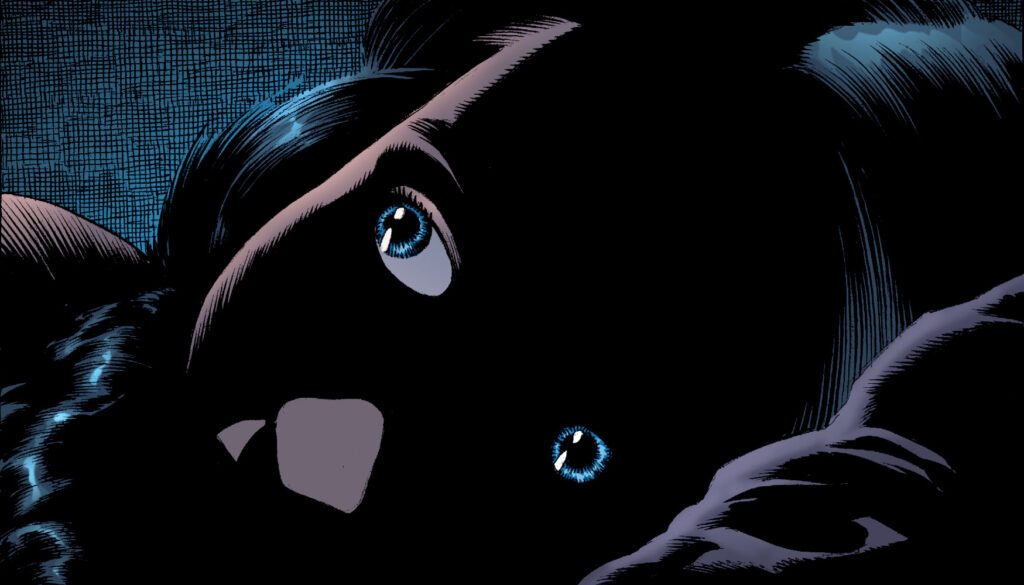
LM: Totally agree with you that the whole editorial team at DC was indispensable. There was so much to learn about this particular format. I remember telling someone at a party that I was writing a comic, and he was like, “So that must be easy! All you have to do is write the dialogue they’re saying.” But that’s maybe ten percent of it. You create the whole story; you decide what visual information the artist should put in each panel and how many panels are on each page; and then you have to make each issue fit into exactly 22 pages, with a cliffhanger at the end.
In some ways, I found it similar to TV writing, since both require you to pitch what you’re doing in advance, collaborate with other artists, and squeeze into a contained form. But it’s very much its own animal, isn’t it?
CMM: Adjusting from prose—which I write without an outline, impressionistically and sporadically, with no oversight—to the comics world was pretty weird. Having to plan out the entire storyline beginning to end; writing a script; figuring out how to describe what I was imagining to an artist—it was pretty wild. I also remember getting a lot of super-interested lessons from my editors (including Joe) about how to write while thinking of the medium.
For example, they explained to me that you want to put visual surprises on even pages, not odd pages, so the surprise is heightened by the reader turning the page. Of course, that’s obvious when you think about it, but that’s not how prose works—it’d never have occurred to me if someone hadn’t pointed it out.
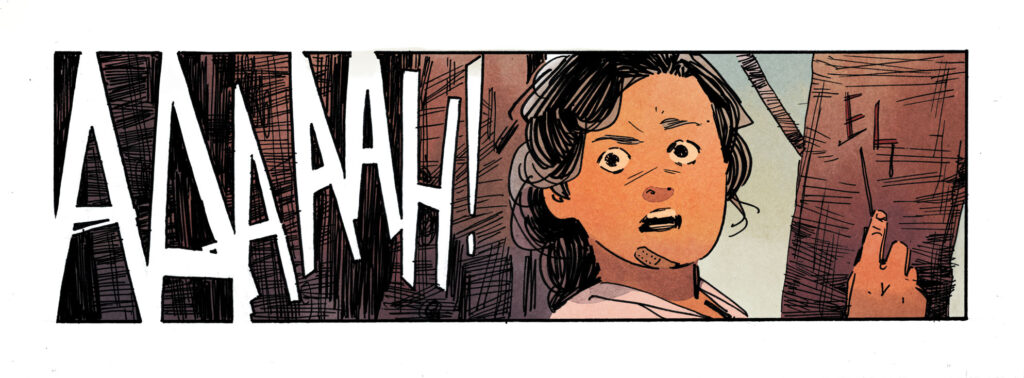
LM: You and I both chose to write teen girl protagonists. Adolescence can be such a vulnerable and scary time—maybe it lends itself particularly well to horror. And both of our books take place in worlds that are uniquely dangerous for women and girls.
In Daphne Byrne it’s 1886, so the era is part of the problem. Daphne is trapped between a possessive demon worming his way into her mind, and a sympathetic father figure with a secret agenda of his own—and her mother is an infantilized upper-class widow whose grief makes her into a sitting duck. They can’t access the power and safety that men in their world take for granted: Daphne isn’t even allowed to check out a freaking library book. It’s very much about how their gender turns them into prey. Which reminds me a lot of your book…
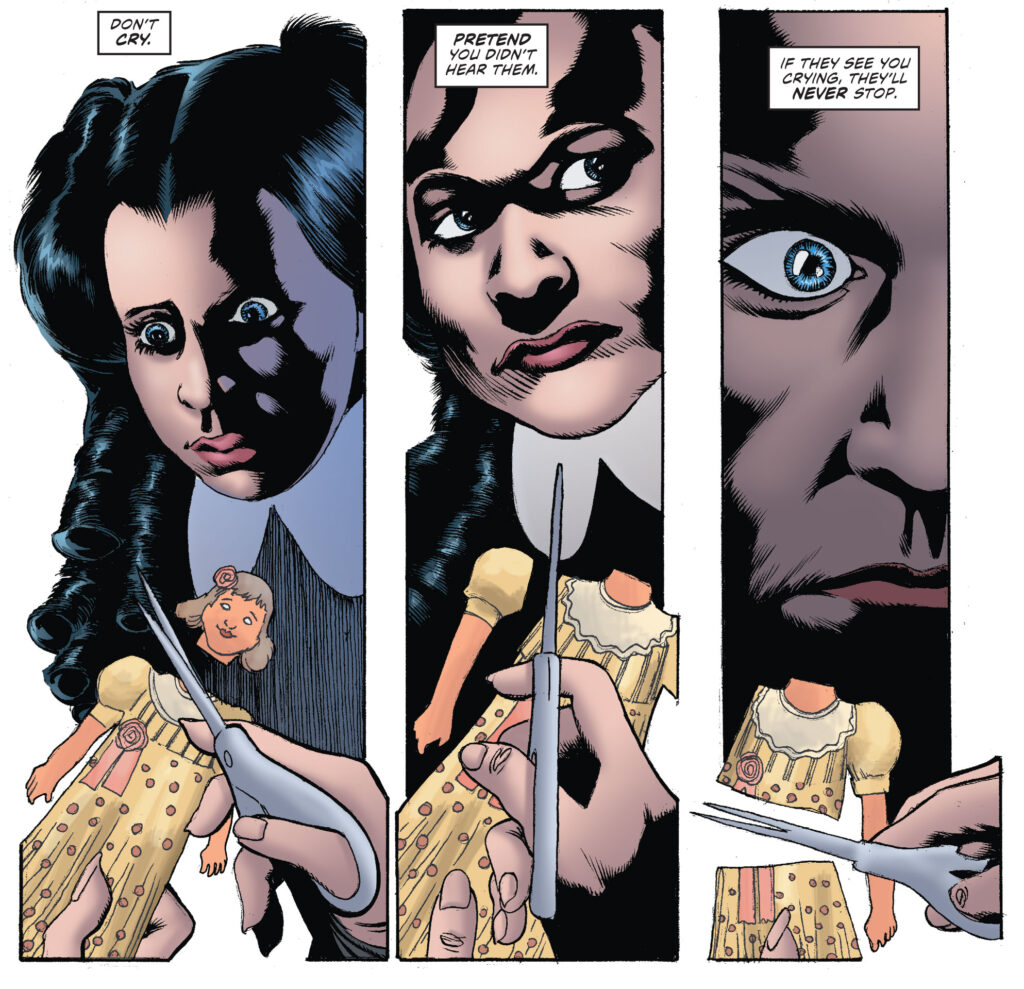
CMM: Yes! In The Low, Low Woods it’s the 1990s, and Octavia and El—two queer teenage dirtbag best friends—are trying to solve a bizarre mystery that has plagued the women in their rural Pennsylvania town since time immemorial. This is very much a story about gendered vulnerability; the way misogyny is its own kind of conspiracy. I wanted to write something that uniquely highlighted the horror of girlhood and adolescence. I wanted to turn the metaphorical monsters into real ones.
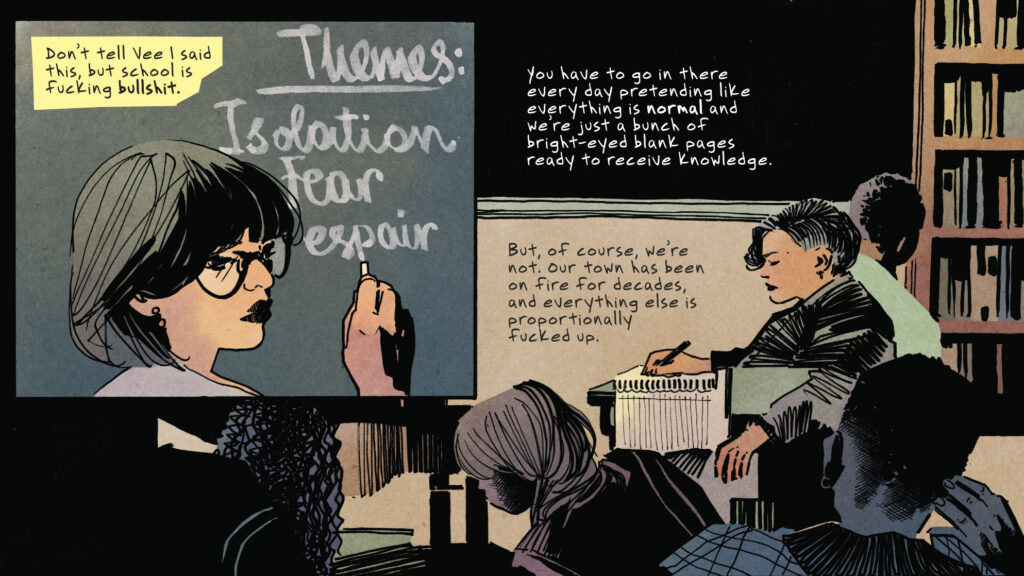
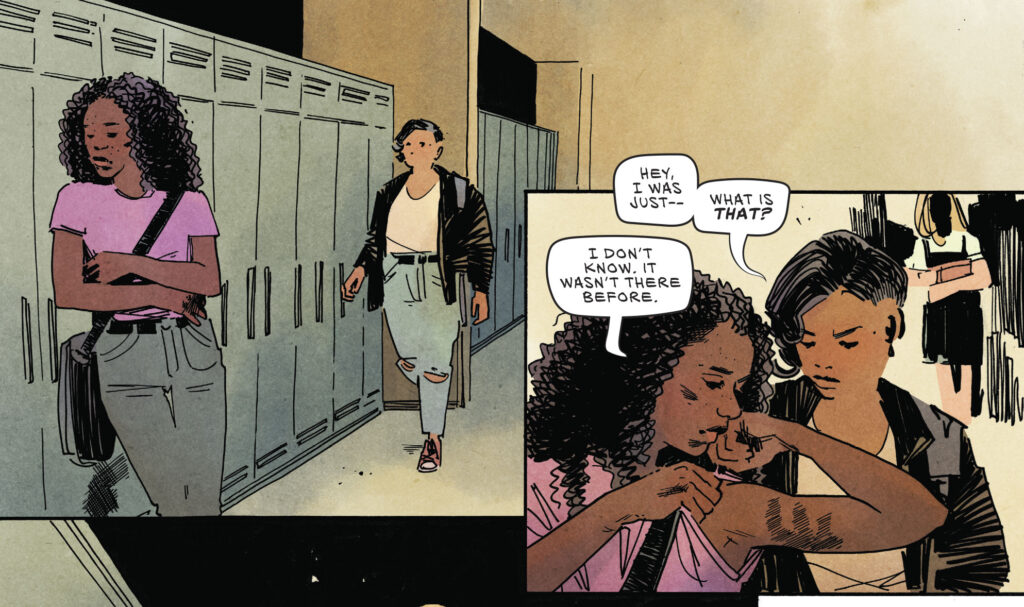
LM: You have absolutely done that! I don’t want to spoil what’s in your book, but there are images in it that destroyed me. Yet in both of our books, the heroines—like most classic horror heroines—are incredibly resilient. I’ve always loved the horror genre, maybe because it’s a genre where you get to see a girl fighting back with everything she’s got.
In this strange collective moment, while we all wait for the election that decides the fate of the world, I’m so hungry for stories like that.
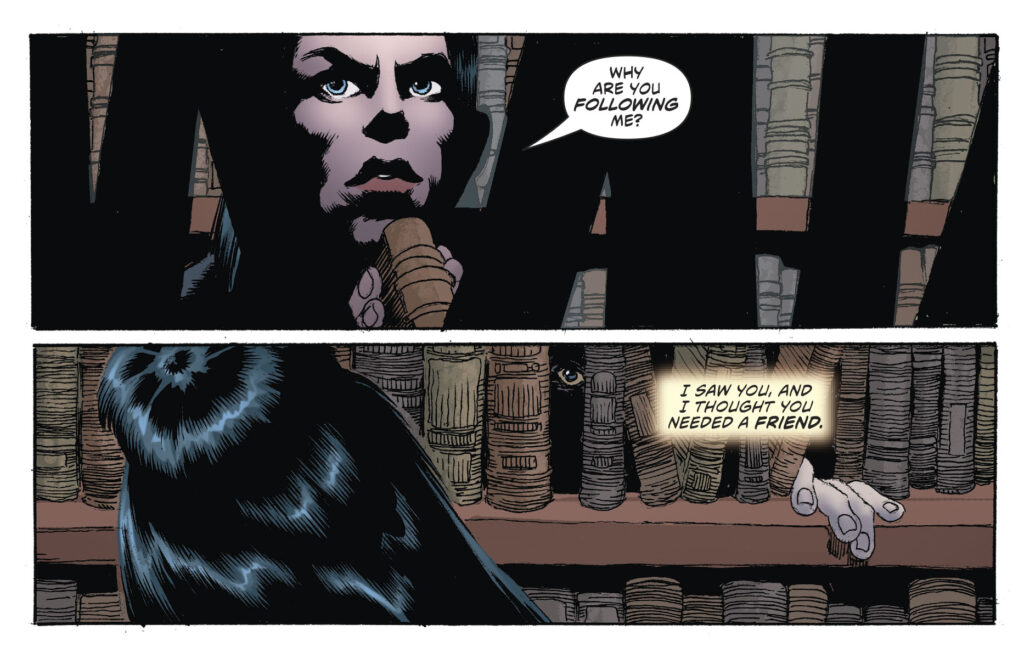
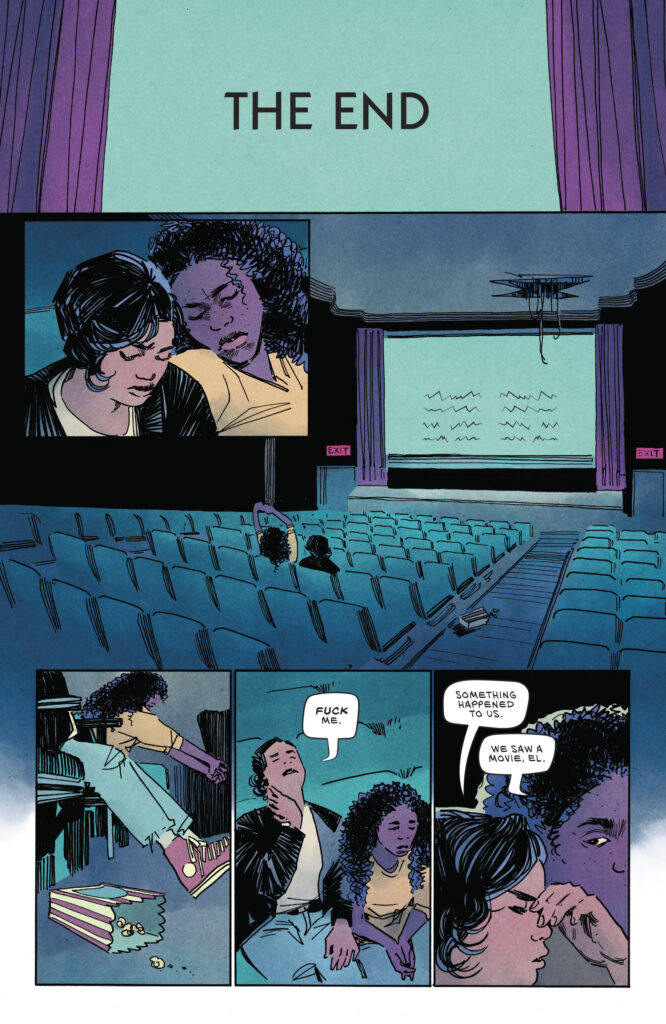
You may also like:




